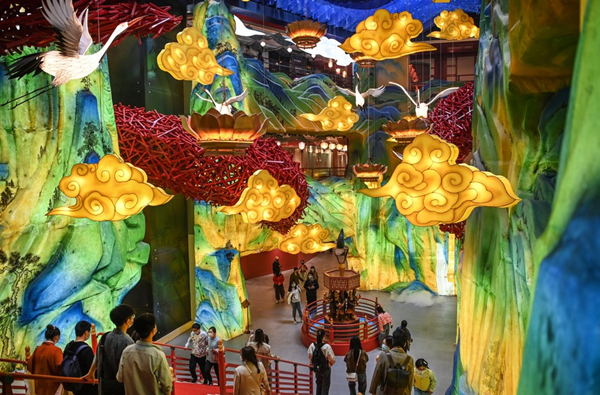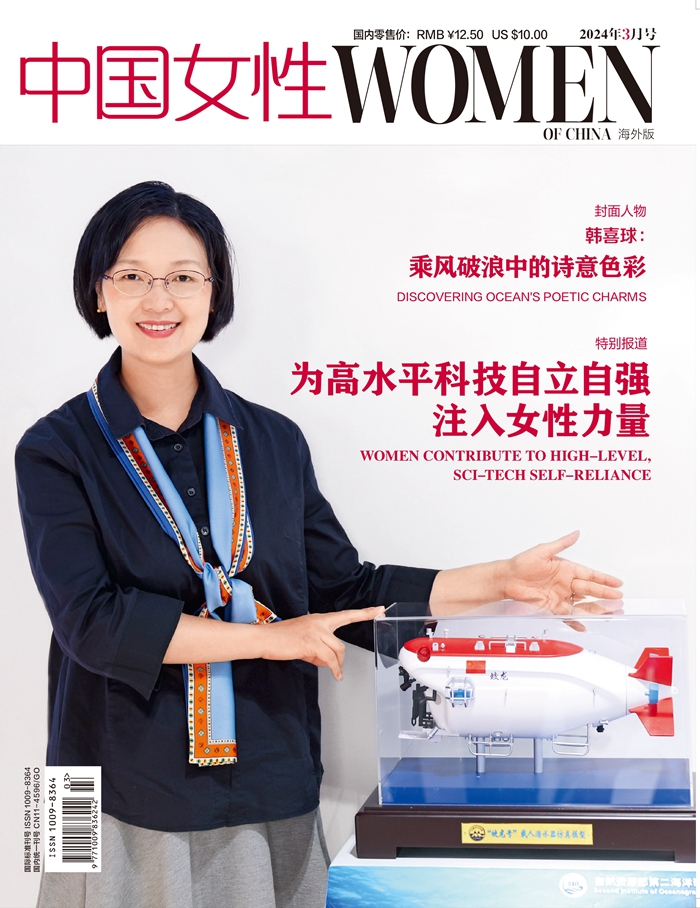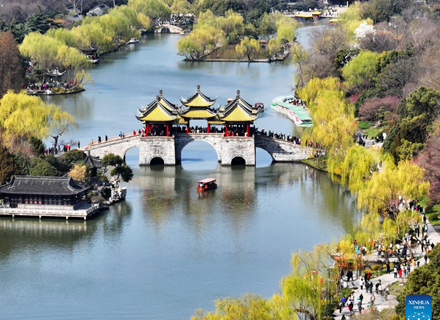Heritage Revived with Modern Glamour Through China's Urban Redevelopment Efforts
 |
| People visit a Tang-style block in Xi'an, northwest China's Shaanxi Province on April 30, 2022. With an area of 24,000 square meters, the block was named after the popular TV series "The Longest Day in Chang'an," providing visitors an immersive cultural experience through a mix of shopping, dining and other recreational activities. [Xinhua/Tao Ming] |
XI'AN, June 12 (Xinhua) — It was like embarking on a time travel back to the Tang Dynasty (618-907) for Liu Yuan, as she walked into a newly refurbished block in a bustling tourist area of Xi'an.
"Everything in the block, from the architecture to people's outfits, is a reenactment of that bygone, glorious age," said Liu, a local college student. "And what surprised me most was when waiters in a tea house performed a play on Chinese tea culture and invited me to have a cup of tea roasted according to the ancient recipe."
As the provincial capital of northwest China's Shaanxi Province, Xi'an, a city founded some 3,100 years ago, served as the capital for 13 dynasties in Chinese history, including Tang, when the city was called Chang'an. It is also home to the world-renowned Terracotta warriors created in the Qin Dynasty (221-207 BC).
Preserving cultural heritage is key to China's urban redevelopment agenda, which requires cities to strike a balance between improving urban infrastructures and protecting and inheriting time-honored treasures.
In early 2022, several ministerial-level Chinese authorities issued a circular on comprehensively strengthening the protection of historical and cultural heritage, saying that the protection of cultural relics should be coordinated with the development of urban and rural construction, economy and tourism.
It asks localities and relevant departments to actively explore innovative transformation and inject new vitality into historical and cultural heritage.
The Tang-style block in Xi'an has proved to be a successful attempt in this aspect, providing visitors an immersive cultural experience through a mix of shopping, dining and other recreational activities.
With an area of 24,000 square meters, the block was named after the popular TV series "The Longest Day in Chang'an," thus attracting a large number of fans of the drama.
"We based our design on the namesake TV series, including its settings, characters and plots. We hope to give people the experience of living like a Tang-era person in the block for a day," said Zhang Yichao, a staff member of the redevelopment project.
Located beside an ancient city wall built some 600 years ago in Xi'an's Beilin District, an abandoned textile factory plant has been transformed into a lively market last year, featuring food merchants, cafes, bars, vintage shops and design studios. Creative bazaars and concerts were frequently held on weekends on the plant's rooftop.
"This place became a messy, stinky farmers' market with poor sanitation after the factory was closed over 20 years ago. People avoided coming here unless absolutely necessary," said Tang Wei, a local resident who has lived in the neighborhood for almost 20 years.
The area caught the attention of architect Quan Jianbiao when he visited the city wall in 2017. "The factory had its heydays in the 20th century and stands just beside a cultural relic. It bears the memories of many local people and is worth the reconstruction efforts," Quan said.
While retaining the original exterior of the three-story factory and adhering to the decor style of the 1960s, Quan's team enhanced the interior infrastructure such as elevators and fire safety systems.
"Before 2000, China's urban renewal projects often started with demolition. But in recent years, the historical and cultural significance of old buildings has gained more attention and appreciation in the country, so now the protection is prioritized during reconstruction," the architect added.
The 54-year-old Tang now owns a car wash facility near the new city landmark with hot business on weekends. "By integrating heritage preservation into urban renewal, it gives a boost to consumption, and we locals now enjoy a better living environment and a stronger sense of belonging," said Tang.
Shaanxi Province is also where Qinqiang Opera, a Chinese folk opera genre, originated in the Western Zhou Dynasty (1046-771 BC). The opera continues to thrive in a vast region of northwest China and was added to the country's intangible heritage list in 2006.
Famous for its Qinqiang performances and education, the Yisu Opera Club was founded in 1912. In 2006, The Yisu Opera Club Theater located in the center of Xi'an was put under state-level protection.
The club and its adjacent area have been turned into a pedestrian zone featuring Qinqiang performances, traditional cuisine and domestic fashion brands. Two museums dedicated to the history of the Yisu Drama Club and the Qinqiang Opera have also been built here.
In the central plaza of the pedestrian zone stands a traditional opera stage. "I always come here on weekends and holidays to enjoy Qinqiang performances for free," said Li Xiang, a local opera enthusiast.
Shortly after the pedestrian zone's opening in September 2021, over 870,000 people visited here during the 7-day National Day holiday, according to local authorities.
"The pedestrian zone is a perfect example of driving the local economy by preserving and utilizing the city's rich cultural assets, which simultaneously serve the material and spiritual needs of the people," Li added.
(Source: Xinhua)
Please understand that womenofchina.cn,a non-profit, information-communication website, cannot reach every writer before using articles and images. For copyright issues, please contact us by emailing: website@womenofchina.cn. The articles published and opinions expressed on this website represent the opinions of writers and are not necessarily shared by womenofchina.cn.








 WeChat
WeChat Weibo
Weibo 京公网安备 11010102004314号
京公网安备 11010102004314号